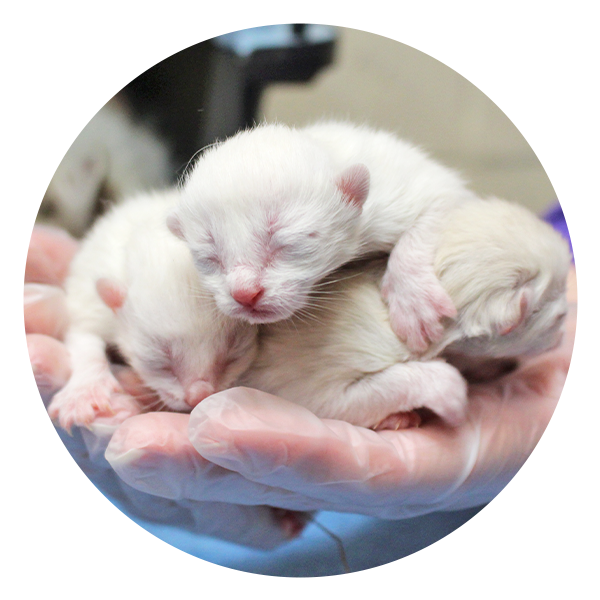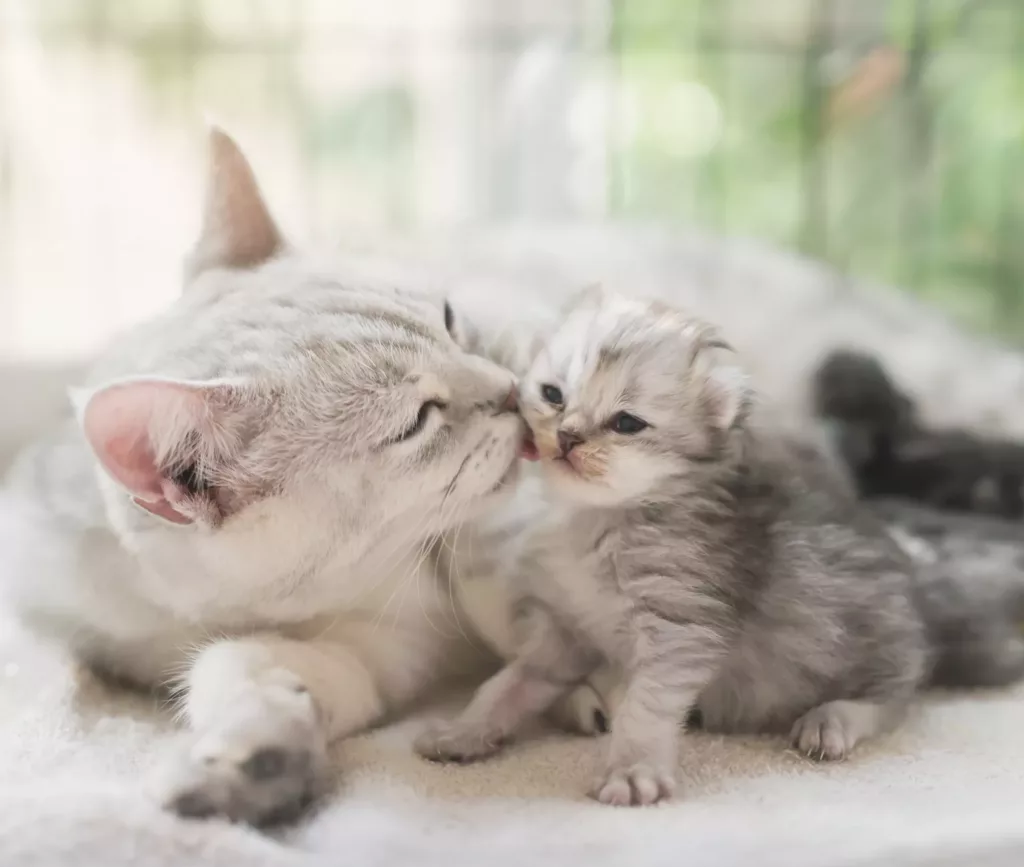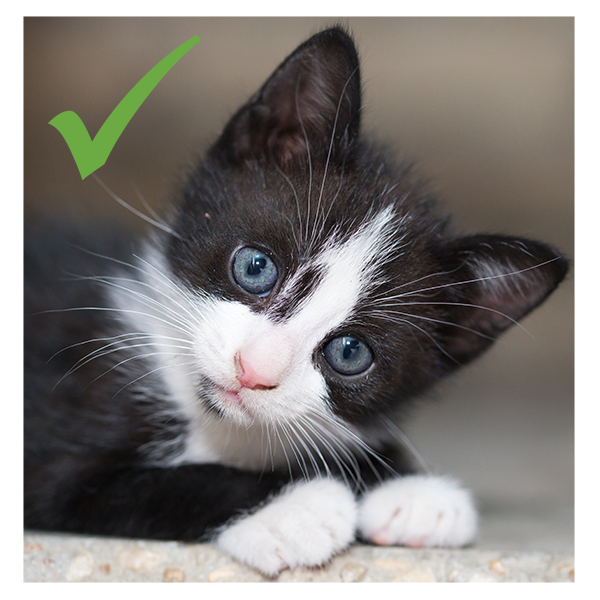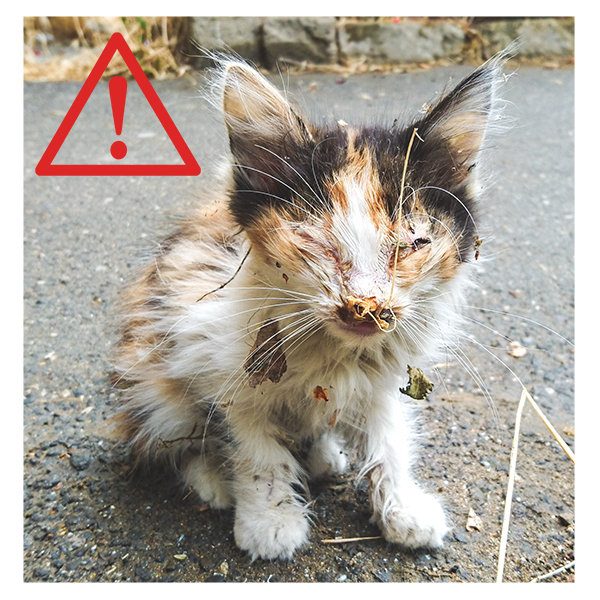How to Help Found Kittens
I found kittens — now what?
Know when (and how) to intervene
Finding kittens is common during the warmer months — a time called “kitten season” when outdoor cats breed rampantly.
Depending on the situation, removing the kittens may be either lifesaving or life-threatening.
Use this guide to determine how to give found kittens their best chance at survival.
First, how old is that kitten?

0-2 WEEKS
Newborns
Eyes closed or just opened
Uncoordinated and helpless
Must be fed every 2-3 hours
Dependent on mother

3-5 WEEKS
Eyes open, eyes are blue
Mobile but uncoordinated
Weigh about one pound
Nursing but will soon wean
Dependent on mother

6-11 WEEKS
Coordinated and playful
Eyes may have changed color
Typically 1.5 to 3 pounds
Can eat food independently
Safe to separate from mother

12+ WEEKS
Larger (3+ pounds) with a more proportionate or lanky body
Highly active and coordinated, able to hunt
Independent from mother
Where there are young kittens, there is (usually) a mother.

Young kittens separated from their mother are much more likely to die or become seriously ill. Unless the kittens are orphaned/ abandoned or there is an immediate threat (such as severe weather, predators, or traffic), kittens less than 6 weeks old should be left with their mother for the best chance of survival.
Mothers will regularly leave kittens for hours at a time while they search for food. Seeing kittens without a mother cat nearby is not immediate cause for concern.
Kittens well-cared for by their mother will appear lively, plump, dry, and overall clean. They may be sleeping in a heap or huddling up quietly. If the kittens appear healthy but mom is not around, leave the area completely and come back in 4-6 hours. If the kittens are still okay, the mother is returning to care for them. These kittens are best left in place.
However, if the kittens appear dirty, sickly, or noticeably underweight, they may be orphaned or abandoned. They may be crying out in hunger or showing signs of sickness or injury. Look for crusty eyes, wet fur, dirty fur, or overall poor condition. If the kittens appear unwell, they may need human intervention to survive.
In case of immediate danger
If you see signs of environmental threats (for example, traffic, predators like wild animals or dogs, or severe weather like cold or flooding), the kittens should be relocated to a safer, sheltered spot nearby where their mother can easily find them.
However, if the kittens are younger than six weeks old and in poor condition, they should be removed immediately and brought to help. If they appear sick or unwell, call a local veterinarian immediately.

LEAVE IN PLACE
Clean, dry fur
Clear eyes
Quiet/content
Overall good condition
This kitten appears well-cared for by its mother and should be left alone for the time being.

NEEDS HELP
Swollen, crusty eyes
Crusty, congested nose
Dirty coat
Overall poor condition
This sick kitten is probably without a mother, so she needs food and medical care to survive.
PATHWAYS TO HELP
Laws for found and stray animals vary from county to county, so you should first check your county laws or call your local animal control for guidance. As allowed by law, the most common outcomes for kittens needing help are TNVR (also called TNR), fostering & rehoming, or surrender to a shelter or rescue. The best choice will depend on the age/health of the kitten, availability of shelter space in your area, and your own capacity to help.
TNVR (aka TNR)
kittens older than 12 weeks
Shelters and rescues are inundated with far more cats and kittens needing help than there are adopters or resources to help them. This incudes feral/outdoor cats and family pets surrendered to the shelter. As a result, many felines are sadly euthanized.
Since feral/outdoor kittens over 12 weeks old are challenging to socialize and may not make suitable family pets, many agree that the most humane outcome for them is TNVR (trap, neuter/spay, vaccinate, and return), whereby the cat is sterilized, vaccinated, and returned to its original location.
Visit spcawake.org/helpline to learn how you can TNVR.
Fostering & rehoming
kittens younger than 12 weeks
The safest and ideal route for kittens under 12 weeks is for you (or someone you know) to foster and directly rehome them to an adoptive family. This bypasses the shelter system entirely, which is best for your found kittens as well as those already at the shelter.
Keep in mind, this may involve some investment of time and money, such as paying for veterinary care and/or fostering the kittens at home until they are healthy and old enough for adoption (over 8 weeks). This route is a worthwhile and lifesaving endeavor.
Visit spcawake.org/helpline to learn how to provide foster care for kittens and find suitable homes.
Surrender to shelter/rescue
Surrendering found kittens to a public, open admission animal shelter carries risks of euthanasia for these kittens or other animals in the shelter’s care, so this option should be considered a last resort in case the other routes do not work for your situation. That said, some counties require by law that found kittens or cats be surrendered to the public shelter.
Alternatively, you may surrender to a private/nonprofit rescue as a safer option — but space and availability may be limited due to high competition for resources.
Visit NoKillNetwork.org for a list of shelters/rescues in your area to contact about availability.
Questions?
We're here to help!
If you need guidance for an unusual situation or have more questions about how to help, contact the Pet Helpline.
Our experienced and knowledgable Helpline team will share resources and help you choose the best course of action to save these little lives!
